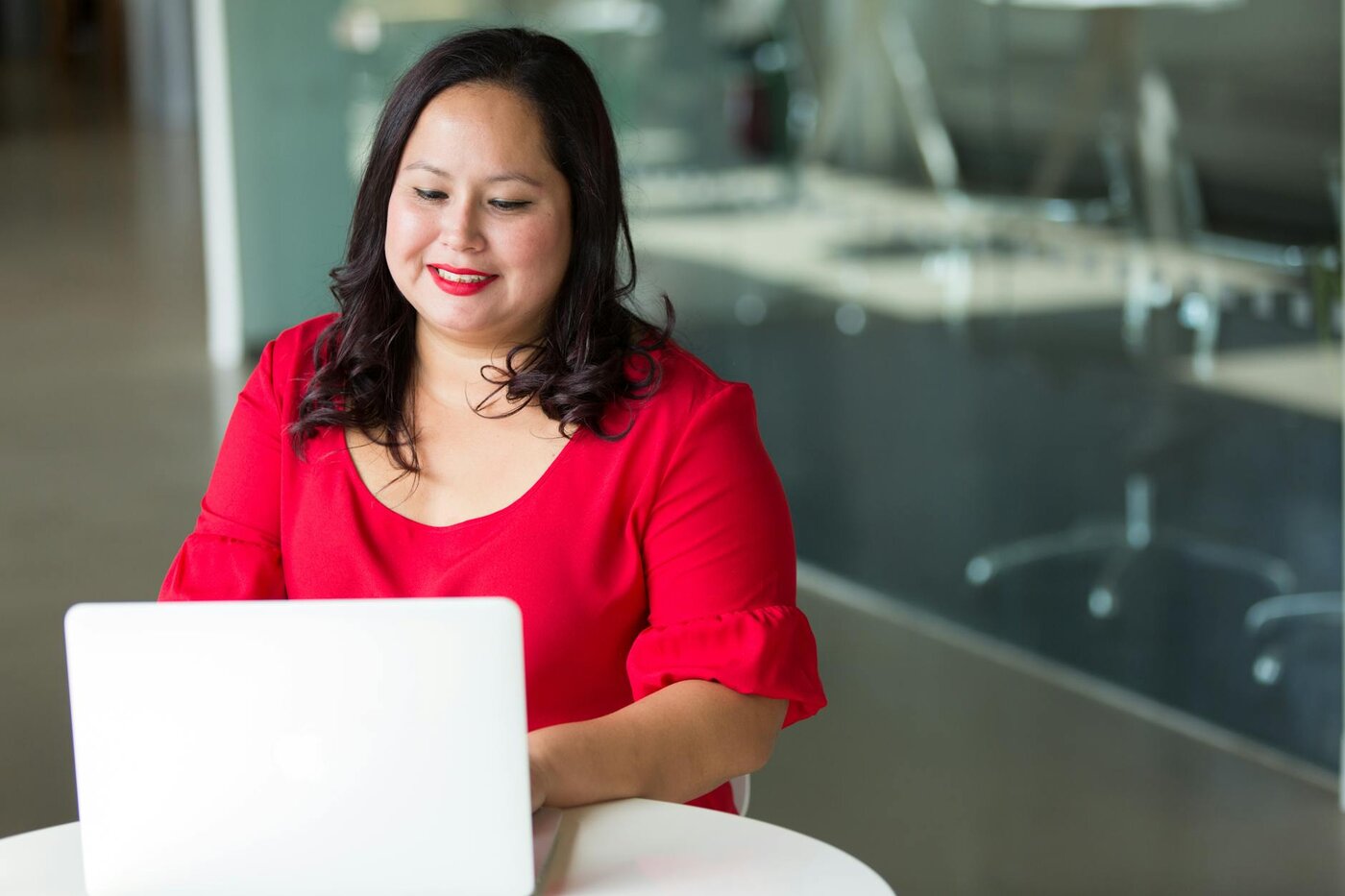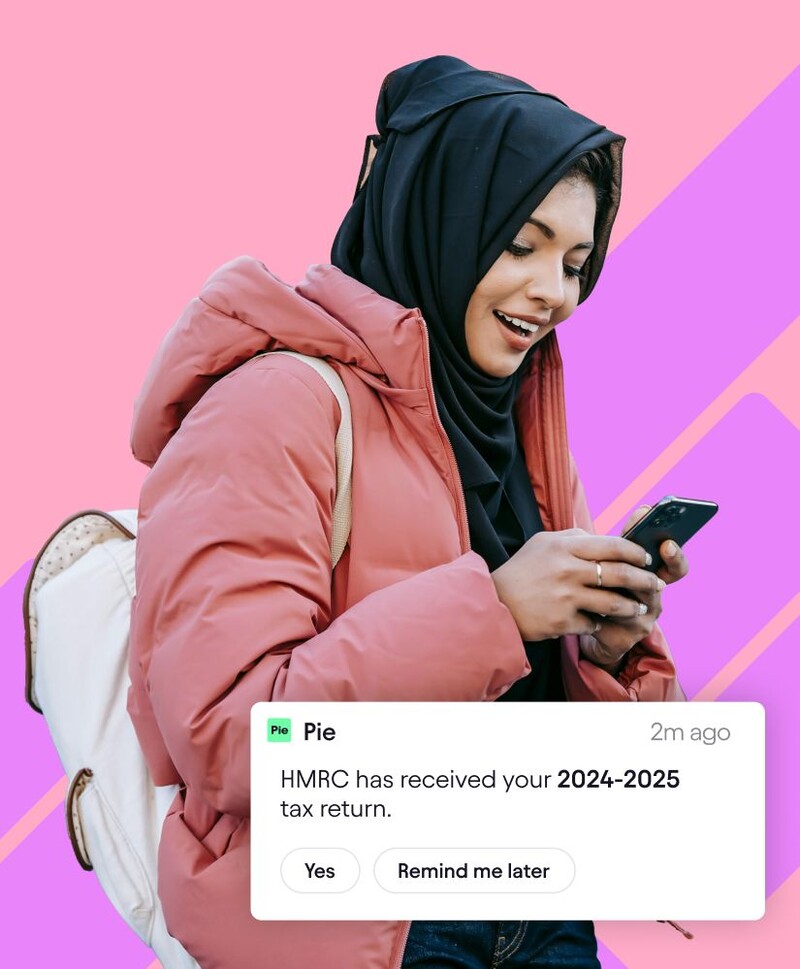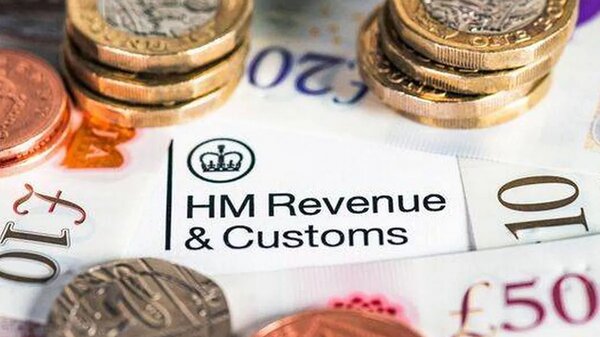What you need to know
Expecting a baby while running your own business comes with unique challenges. Unlike employees who receive Statutory Maternity Pay through their employer provided they are eligible for statutory maternity pay, as employers are responsible for paying this to eligible employees self-employed mums-to-be need to apply directly to the government for Maternity Allowance. Find out how self-employed mums-to-be can get maternity allowance.
The UK’s first personal tax app, Pie tax, helps freelancers track their National Insurance contributions to qualify. Our dashboard makes it simple to monitor your eligibility status throughout your pregnancy journey. Or if you’re just here to get to grips with it all, let’s break it down!
What is Maternity Allowance for Self-Employed Women?
Maternity Allowance provides financial support during pregnancy and early motherhood, especially around your baby's arrival and the baby's early life, when you’re self-employed. It’s the government’s way of ensuring you can take maternity leave to care for your new baby without losing all your income. Self employed people are eligible for Maternity Allowance if they meet the eligibility criteria, which include specific employment history and National Insurance contributions.
Currently, you can receive up to £172.48 per week for up to 39 weeks (2023/24 rates). This works out at around £6,726 in total not a fortune, but definitely helpful during those sleep-deprived first months! The maternity allowance payment you receive depends on your eligibility and your average weekly earnings, as well as your National Insurance contributions.
Those who meet all the requirements can receive the full amount, known as the full rate maternity allowance, while others may receive a lower rate. Most people who are self-employed and meet the criteria will qualify for some level of payment. You cannot receive both Statutory Maternity Pay and Maternity Allowance for the same pregnancy.
The payment is paid directly to you rather than through an employer. This gives qualified applicants flexibility around how and when they wind down their business activities.

How to Claim Maternity Allowance When Self-Employed
The application process isn’t too complex, but timing matters. You’ll need to complete the claim form (MA1), which you use to claim Maternity Allowance. You can download the claim form from GOV.UK or request it by phone.
When claiming Maternity Allowance, you must be registered as self employed with HMRC before claiming. You’ll need to provide proof of your self-employment and key dates, such as the week before your baby is due, as part of your application.
Eligibility for Maternity Allowance is determined by the number of weeks before your baby is due, and you can apply up to 14 weeks before your due date. Make sure not to stop work too early before applying, as eligibility is based on specific dates, including your employment and the week before your baby is due. Apply too soon and you’ll simply be asked to reapply later.
You’ll need to include your MATB1 certificate (which your midwife or doctor provides around week 20 of pregnancy). You’ll also need evidence of your self-employment status.
Eligibility Requirements You Must Meet
To qualify for Maternity Allowance as a self-employed person, you need to meet specific criteria. You must have been self-employed for at least 26 weeks during your ‘test period’ the 66 weeks before your baby’s due date. You may be employed or self employed during the test period to meet the eligibility requirements.
You may still be eligible if you have recently stopped working or had different jobs, including work for the same employer, during the test period. It does not matter why you left your job or jobs when determining eligibility. Eligibility also applies if you have helped your spouse or civil partner with their self employed work, even if it was unpaid work, as long as your spouse or civil partner is registered as self employed and meets the National Insurance requirements.
You must also have paid Class 2 National Insurance contributions for at least 13 of those weeks. If you haven’t, don’t worry you can make voluntary contributions to qualify.
Your expected earnings must average at least £30 per week during your test period. HMRC will look at your Self Assessment tax returns to verify this.
If you’ve recently become self employed and haven’t yet completed a tax return, you’ll need to provide other evidence. This might include invoices or client contracts showing your work and earnings.
Universal Credit and support allowance may interact with your Maternity Allowance payments, so check how these benefits affect each other. Claiming Maternity Allowance does not affect your entitlement to parental leave, shared parental leave, or paternity leave, but you should check the dates and rules for each benefit. You must report any work you do during your maternity period, as exceeding the allowed amount could cause you to lose some or all of your benefit. For further information, consult the official GOV.UK guidance.

Supporting Evidence to Gather Before Applying
Before completing your application, gather all the paperwork you’ll need. This will make the process much smoother.
Your MATB1 certificate is essential you can’t complete your application without it. Keep the original safe as you’ll need to send it with your form.
Have your National Insurance number to hand, along with details of your bank account for payments. These details ensure your application can be processed efficiently.
If you’ve been employed alongside self-employment, you’ll also need details of any employment during your test period. This helps establish your complete working pattern.
Proof of self-employment might include tax returns, business accounts, or client invoices. When submitting your claim form, you must provide proof of your self-employment and earnings to support your claim. Anything that clearly shows you’ve been trading will help support your claim.
Tax Implications and NI Considerations
Maternity Allowance is a taxable benefit, which means you’ll need to declare it on your Self Assessment tax return. However, tax is not deducted at source.
If you’re continuing to run your business in a reduced capacity while receiving Maternity Allowance, remember that business income is still taxable as normal. You’ll need to keep accurate records.
Class 2 NI contributions are crucial for qualifying. Paying your National Insurance contributions on time is essential to ensure you qualify for Maternity Allowance. If you discover you haven’t made enough contributions, contact HMRC about making voluntary payments to fill the gap.
The tax year in which you become pregnant is particularly important. Make sure your Self Assessment is submitted on time and accurately reflects your self-employment status.
Consider talking to an accountant about tax planning before and during your maternity period. It could save you money and stress during this important time.

After Your Application is Approved
Once approved, maternity allowance payments typically start 11 weeks before your due date, unless you specify a later start date. Maternity allowance payments are paid directly into your bank account every 2 or 4 weeks.
You can work for up to 10 'kit days' (Keeping in Touch days) during your maternity period without losing your maternity allowance payments. A kit day allows you to do some work, such as checking in with important clients, without affecting your entitlement. If you work more than 10 kit days, you could lose your maternity allowance for the weeks you work extra days.
When I had my first child while running my freelance design business, these kit days were invaluable. I used them to handle two urgent client projects without sacrificing my maternity allowance payments.
If your circumstances change for example, if you stop work and return to your job, or if your baby arrives earlier than expected (birth), you must inform the Maternity Allowance team promptly. Failure to do so could result in overpayments that you’ll need to repay.
Remember that returning to work full time will end your entitlement to maternity allowance payments. This applies even if you haven’t received the full 39 weeks of payments.
Final Thoughts
Applying for Maternity Allowance as a self-employed person takes a bit of preparation, but it's worth the effort. The financial support can make a significant difference during this special time.
The key is to keep good records of your self-employment and ensure your Class 2 National Insurance contributions are up to date. Do this before you become pregnant if possible.
Apply at the right time with all your supporting evidence ready. This way, you'll have one less thing to worry about as you prepare to welcome your new arrival.

Pie tax: Simplifying Self-Employed Maternity Allowance Tax
Navigating maternity benefits while self-employed shouldn't add extra stress during your pregnancy journey. Our personal tax app helps you stay on top of the paperwork that matters.
Pie.tax offers real-time tax calculations that help you track your National Insurance contributions. This ensures you meet Maternity Allowance requirements before you need to apply.
Our multiple-income dashboard is perfect for self-employed mothers who may have diverse income streams. It makes providing accurate information on your MA1 form much simpler.
With automated bookkeeping, we keep your self-employment records organised and readily available. This is invaluable when you need to submit supporting evidence for your application.
Curious about how it could help with your self-employment tax and maternity planning? Explore the Pie.tax app to see how it works.











